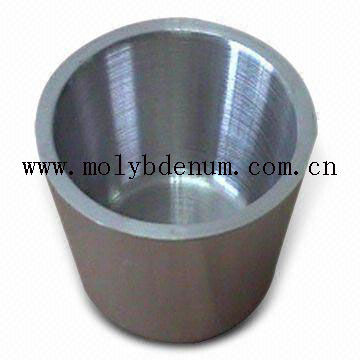Molybdenum Tungsten
Introduction
Molybdenum (Mo) and tungsten (W) are two elements in the same column of the periodic table. They also behave similarly in nature. The average concentration in the Earth's crust is 1.5 ppm for both elements. Molybdenum is an essential nutrient for plants and animals. At large concentrations, Mo may be toxic. This is sometimes the case for leachates from alkaline ashes. Tungsten is an important strategic metal that is used in a variety of industrial applications. It is usually mined from scheelite, CaWO4, och wolframite, (Fe,Mn)WO4. Tungsten is released to the environment, e.g. through its use in winter tires and ammunition. On the whole, the environmental behaviour of tungsten is not well known.

In the environment, Mo and W are mainly present in their anionic forms, molybdate (MoO42-) and tungstate (WO42-), and their protonated and polymerised species. Under reducing conditions (for example in the bottom sediments of lakes), other species may form because of the redu tion of Mo and W to lower valence states.
It has been known for a long time that molybdate and tungstate may be bound to Fe and Al oxides in soils and sediments, and that this process may determine the dissolution of Mo and W. However, very few studies have been made to quantify this process. There are also indications that Mo and W may be bound to organic matter. The aim of this project is to quantify the binding of Mo and W to ferrihydrite (a Fe oxide) and to organic matter. This will enable better assessments of Mo and W mobility in the environment.
Results
The adsorption of molybdate and tungstate to ferrihydrite was studied. Constants were optimized for the surface complexation models CD-MUSIC and DLM using the FITEQL software. The binding of Mo and W to organic matter is also studied; this part of the project is not completed and therefore, results are not displayed here. Some of the most important results from the adsorption study are the following:
The adsorption of tungstate to ferrihydrite is stronger than that of molybdate. Both anions were strongly bound at low pH, where they competed well with phosphate for available adsorption sites. At high pH (> 9), molybdate in particular was bound only weakly.
The adsorption of the two anions could be simulated using two monodentate complexes; this was true for CD-MUSIC as well as for DLM. The strong competition with phosphate at low pH could only be simulated when one of these complexes was fully protonated, equivalent to adsorbed molybdic or tungstic acid.
If you have got any interest in molybdenum metals, please feel free to contact us by email: sales@chinatungsten.com, sales@xiamentungsten.com or by telephone:86 592 512 9696/86 592 512 9595.
Related Links: Molybdenum News & Prices
